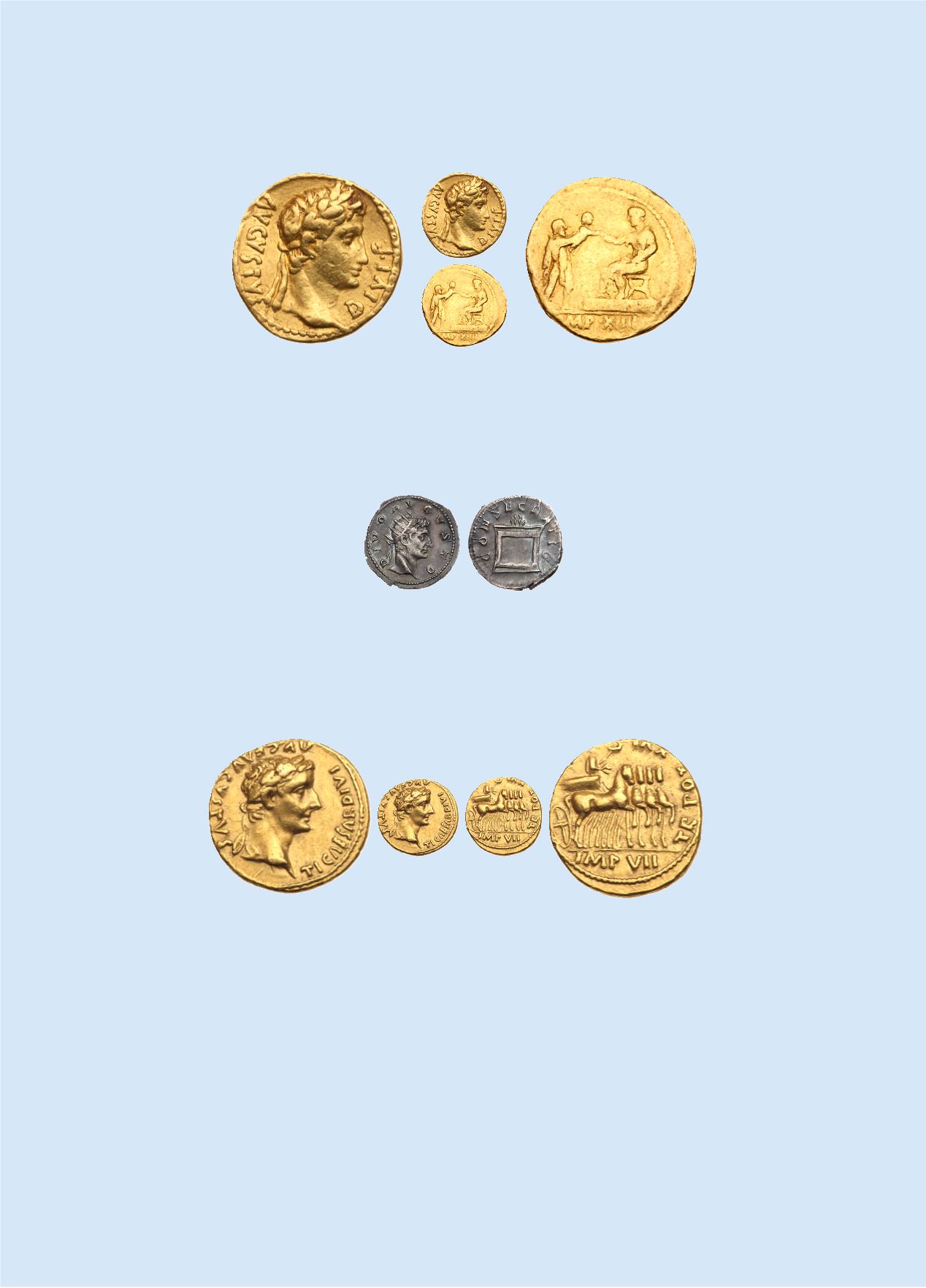

Very rare Gold Aureus of Augustus
1195
Augustus, 27 BC-14 AD. Gold Aureus (7.81g). Mint of Lugdunum 8 BC. AVGVSTVS – DIVI F Laureate
head right. Rev. Augustus, togate, seated left. on stool on platform, extending right. hand to infant held out
by cloaked male figure; in exergue, IMP XIIII.
Very rare
. About very fine.
$ 8,000
The type of barbarian offering child to Augustus probably refers to the taking of hostages from German tribes during the campaigns
of 8 BC (Mattingly, BMC I, p. cxvi).
1196
Divus Augustus. Silver Antoninianus (4.16 g), died AD 14. Rome, commemorative issue under Trajan
Decius, AD 250/1. DIVO AVGVSTO, radiate head of Augustus right. Rev. CONSE-CRATIO, altar. (RIC
78; RSC -). Cabinet toning. Choice very fine.
$ 750
Highly Desirable Gold Aureus of Tiberius
1197
Tiberius. Gold Aureus (7.95 g), AD 14-37. Lugdunum, AD 14/5. TI CAESAR DIVI AVG F AVGVSTVS,
laureate head of Tiberius right. Rev. TR POT XVI IMP VII, the emperor in slow quadriga right, holding
laurel-branch and an eagle-tipped scepter. (RIC 1; BMC 1; Calicó 307).
Rare first issue.
Slightly off-center on
reverse. Choice very fine.
$ 9,500
ex Archer M. Huntington Collection
.
The reverse of this aureus emphasizes the legitimacy of Tiberius as the chosen heir of Augustus and rightful second emperor of the
Julio-Claudian house. He appears in a quadriga holding a laurel branch and the eagle-tipped consular scepter in the role of the
triumphator. This can only refer to the triumph that Tiberius celebrated in AD 12 upon the successful completion of his campaigns
in Pannonia. According to Suetonius, Tiberius rode in the triumphal procession, but before he reached the Capitol he dismounted
from his chariot and fell at the knees of Augustus as a sign of filial (by adoption) piety. In response to this touching act, a law was
passed that essentially made Tiberius co-princeps with Augustus and permitted him to govern provinces and undertake the census.
Thus the coin, struck in AD 14/5 serves to remind the user of the events of only a few years earlier at a time when there was still a
great deal of confusion about how the imperial succession would play out.



















